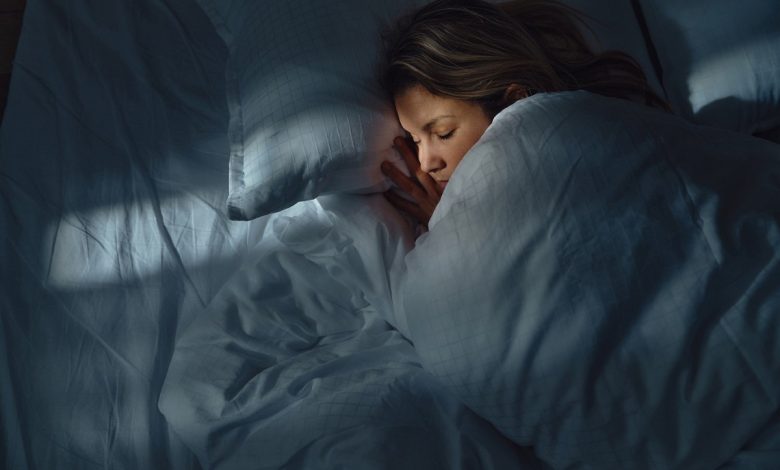The Power Of Visualization For Faster Sleep: A Mindful Approach To Rest

Visualization For Faster Sleep: In today’s fast-paced world, many individuals struggle with falling asleep, leading to sleep deprivation and its associated negative effects on physical and mental health.
While there are numerous techniques available to aid in sleep, one approach that has gained considerable attention is visualization, specifically imagining calming and peaceful scenes.
Dr. Dimitriu, a sleep expert, emphasizes the importance of this technique over more traditional methods, such as counting sheep. This essay will explore how visualization can help individuals fall asleep more quickly by calming the mind, and how it contrasts with other cognitive techniques that may inadvertently disrupt sleep.
The Power Of Visualization For Faster Sleep
The Science Of Visualization And Sleep

Visualization For Faster Sleep, Visualization, as defined in psychological and therapeutic contexts, refers to the process of forming vivid mental images of specific situations or environments.
In the case of sleep, these images are typically relaxing and tranquil, intended to quiet the mind and induce a state of calmness. Dr. Dimitriu’s recommendation of visualizing oneself in a peaceful environment, such as being in a boat floating on calm waters, is grounded in the idea that such imagery can activate the brain’s parasympathetic nervous system.
Visualization For Faster Sleep, This system is responsible for promoting relaxation and reducing stress, helping to prepare the body for sleep.
Visualization For Faster Sleep, Research supports the effectiveness of this approach. A study by Van Strien et al. (2013) found that participants who engaged in positive imagery before bed experienced less difficulty falling asleep compared to those who did not. The act of visualizing relaxing scenes can distract the mind from the stressors and anxieties of the day, thus promoting a more restful state conducive to sleep.
The Role Of Cognitive Techniques In Sleep Disorders
Visualization For Faster Sleep, While visualization is widely regarded as a beneficial sleep aid, traditional methods such as counting sheep have long been recommended as ways to induce sleep. However, these methods may not be as effective as once thought.
Counting sheep requires a level of cognitive engagement that can activate the brain’s analytical and problem-solving processes. According to Dr. Dimitriu, techniques that demand mental concentration—like counting or repeating words—can overstimulate the mind and make it more difficult to relax.
Visualization For Faster Sleep, A study conducted by Harrow et al. (2017) explored the efficacy of counting sheep versus more relaxing mental activities. The results showed that while counting might momentarily distract individuals from their worries, it is not as effective at promoting sleep as visualization techniques.
The researchers argued that cognitive tasks involving numerical or verbal components could inadvertently keep the brain alert, making it harder to fall asleep.
The Benefits Of Visualization Over Counting Sheep

Visualization For Faster Sleep, Visualization offers several advantages over other cognitive techniques. First, it taps into the power of the imagination, which is naturally a more passive and relaxing activity compared to the active mental engagement required by counting.
By focusing on an idyllic scene, such as a serene beach or a quiet forest, the mind can gradually shift from a state of alertness to one of peacefulness. This transition is critical for initiating the sleep process, which is often hindered by the mental restlessness caused by stress or anxiety.
Visualization For Faster Sleep, Additionally, visualization encourages mindfulness—a practice of being fully present in the moment—which has been shown to reduce anxiety and promote better sleep quality. A study by Ong et al. (2014) demonstrated that mindfulness meditation techniques, which are closely related to visualization, improved both sleep onset and quality in individuals with insomnia.
By integrating mindfulness into visualization, individuals can enhance their ability to relax and focus on the calming images, leading to a more seamless transition into sleep.
Practical Tips For Effective Visualization
Visualization For Faster Sleep, To use visualization effectively for better sleep, several practical strategies can be employed:
Choose A Calming Scene: Opt for a peaceful and soothing environment, such as a quiet meadow, a gentle stream, or a serene mountain top. The scene should evoke feelings of calm and safety.
Engage All The Senses: To deepen the relaxation effect, try to engage all five senses in your visualization. Imagine the sights, sounds, smells, and even the feel of the environment you are visualizing. For example, if you are imagining a beach, think about the warmth of the sun, the sound of the waves, and the scent of saltwater in the air.
Practice Regularly: Like any skill, visualization becomes more effective with practice. The more frequently you engage in this technique, the easier it will become to slip into a state of relaxation when it’s time to sleep.
Let Go Of Control: The key to effective visualization is letting go of the need to control the process. Allow your mind to wander gently into the scene without trying to force it or hold onto specific details. This relaxed approach will help guide you into a natural state of sleep.
Conclusion
Visualization For Faster Sleep, Visualization is a powerful tool for improving sleep, as it helps to calm the mind and promote relaxation. Unlike traditional methods such as counting sheep, which can stimulate mental activity, visualization uses peaceful and calming imagery to induce a restful state.
Visualization For Faster Sleep, By engaging the imagination in a mindful and relaxed manner, individuals can more easily transition into sleep, benefiting from improved sleep onset and overall sleep quality. With practice, visualization can become an effective strategy for overcoming sleep difficulties and achieving a more restful night’s sleep.
Also Read:
How Weighted Blankets Enhance Sleep: A Scientific Perspective
Irregular Sleep Patterns Increase The Risk Of Heart Disease
Lonely People Experience More Nightmares: The Psychological Connection Between Loneliness And Sleep




